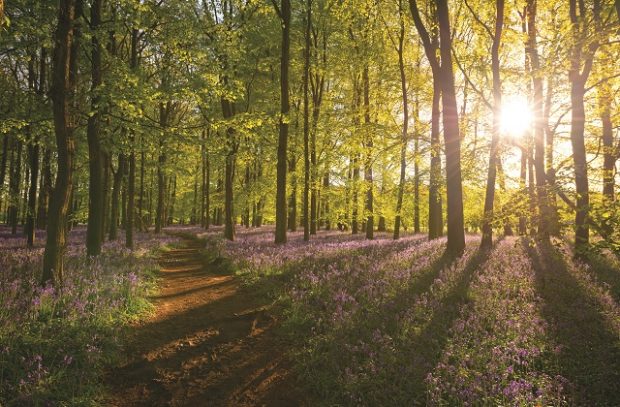
Today we are looking at the latest government tree planting statistics published by the Forestry Commission
Overall, tree planting rates in England have increased since last year. The statistics show that the area of woodland creation in England has increased by 40 percent since last year to 3,128 hectares.
This increase was despite a difficult tree planting season with planting conditions affected by drought, which made it particularly challenging for young trees to establish
Commenting on the statistics, Forestry Minister Trudy Harrison said:
Since the start of this parliament, we have planted or supported the planting of over 10.8m trees. Increasing tree cover is at the heart our pledge to leave the environment in a better condition than when we inherited it, which is why we are investing £650m in transforming England’s treescapes.
“Tree planting rates have risen to 3,600 hectares and now are at record levels, but we know there is much more to do and will continue work with partners at pace to increase the nation’s tree cover and boost the forestry sector - creating new jobs, supporting innovative new technologies and training the next generation of foresters.
The annual statistics reflect how our England Trees Action plan has kickstarted tree planting across the country with a holistic approach to growing our tree cover while also ensuring that we are planting the right tress in the right place.
We are supporting farmers, local authorities and other landowners to plant trees in urban and rural areas. We are supporting landowners and farmers to increase tree cover through the England Woodland Creation grant scheme, encouraging diverse woodland types and tree species, this sits alongside our network of regional Community Forests and Woodland Creation Partnerships that create new woodlands near to where people live, and schemes focused on planting trees in urban areas such as the Local Authority Treescapes Fund and the Urban Tree Challenge Fund.
We’re funding nurseries to boost the supply healthy seeds and trees. We have awarded almost £3m for tree nursery projects via the Tree Production Capital Grant and Innovation Fund, in addition to £800k via the Seed Sourcing Grant to support our future seed supply.
We are also boosting the domestic timber industry so that we can use more home-grown timber across the UK’s construction industry. Our The Woods into Management Forestry Innovation Funds is supporting projects which will develop new technologies and working practices to help homegrown timber production meet domestic and international demand – helping to bolster timber security and grow the United Kingdom’s forestry and primary wood processing sectors, which support 30,000 jobs and contribute over £2 billion to our economy every year.
Due to these efforts our tree planting programme will help us reach net zero by 2050, reduce the impact of climate change and turn the tide on biodiversity decline.
3 comments
Comment by Jacqueline Watson posted on
I don't understand how the rate of tree planting at the beginning of this blog is 3,128 hectares and then magically increases to 3,600 a few lines down.
The reality is that planting trees is not necessarily an indication of how many actually survive, so however laudable planting tree is and it is, it would be better if the figure was reflective of how many trees there are some 3 years after planting has taken place.
Also the sort of trees planted/required for construction are not those that will provide an increase in biodiversity. So out of the 3,128 hectares: how many will ultimately going to be for commercial wood and how many to improve the parlous state of wildlife in our woodlands
Comment by William Hughes-Games posted on
There is a danger that like King Charles, (his weeping willows) the tree planters will object to beavers since they cut down trees. So plant deciduous trees near streams. When they are cut down, they grow again from the stump and provide new tender feed for the beavers. In fact to get beavers to occupy a new area, plant willows, aspens and so forth by the stream where you want beavers to settle.
Comment by Lucy Rodriguez-Laranjo posted on
The only figure that matters is net tree loss/gain.
Furthermore, replacing old trees with young ones is temporarily increasing our CO2 burden, since young trees are not carbon negative, and the loss of old trees indicates the loss of mature ecosystems and greater biodiversity loss.
I urge you to change your metrics to reflect a more accurate picture of the UK’s ecological health, by region.